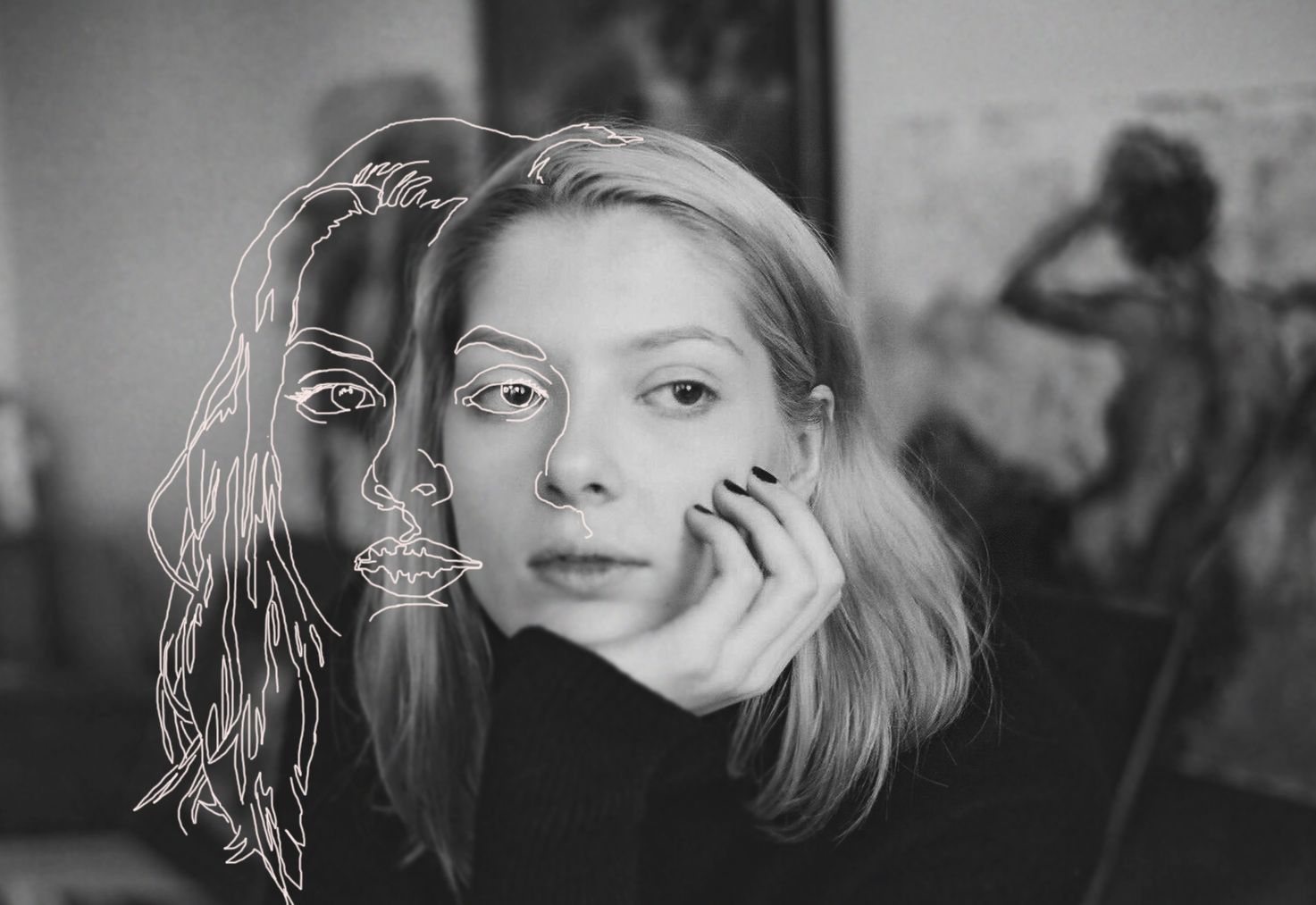Architerior talked to Valeria Duca, a moldovan artist who now lives in Washington D.C. Valeria is a skilled painter and her participation at Venice Biennale in 2011 marked Moldova’s debut on the international art stage.

Can you tell us about how you found your way into art?
The earliest memory I have is when I was about nine. I remember my sister had this light-blue notebook with cartoon characters printed in the corner of every page. I loved that notebook, but it wasn’t mine, so I decided to make my own cartoons to look at. I drew them on a bigger scale – Tom & Jerry, Tweety, Bugs Bunny, little A4 posters that made me happy. I think that was the first time that I was lost in the process and proud of the result.

In short, what defines your art style? What techniques do you use? Has your style or technique changed over time?
My process of creation consists of lengthy interactions with the person to be depicted. It is important to me that we have these conversations alone – this allows for a level of intimacy and openness difficult to recreate otherwise. I take hundreds of photographs which serve as reference to my paintings. If there is something constant in my work, it is that I’ve always used oil paint, from day one. The rest was always shifting. I started with abstract, I had periods of landscape, still life, portraiture. I even dabbled in some conceptual art installation. It is only in the last couple of years that an identity is starting to take shape, yet I don’t want to give into the pressure of “defining my art style.” I hope it continues to evolve, I hope I won’t become predictable and defined by one constant.

Your art focuses on portraits, what is it about portraits that appeal to you?
Although my compositions contain mostly single figures, I don’t think of them as portraits… Mostly because I don’t care so much about documenting the physical appearance of the subject, nor do I claim to know all-encompassing truths about the subject. Instead of painting portraits, I think of my art as portraying small moments, snippets of truth, fragments of stories, that collectively help me ‘make sense’ of the world, connect to, and understand the people that surround me.

You describe a time in your life when you used to sit in cafés and do portraits of people all day. How do you think this experience has shaped you as an artist?
It helped me technically; the exercise was effective, and I could see my drawing improving by the hour. In other respects, however, I can’t say that human interactions shaped my art in a direct way, rather it was art that shaped my human interactions. I’ve always found it difficult to be in new social situations, and art made it easier for me to talk to and meet new people.
When other people view your work, what are their reactions and thoughts?
It is mostly a positive reaction in varying degrees, but I don’t think that says much about my art, as much as it speaks about how low the threshold for art is. The most common reaction definitely is relief, along the lines of “I was worried when you said that you were an artist, because I thought you’re one of those “crazy artists”, but I like your work”.

What are you working on right now?
On a series of self-portraits, although I am self-conscious about the number of self-portraits that I painted this year already. At the same time, me is who I know best, and it feels intrusive to put a model / a friend / a family member under the microscope, and dissect and analyse to the same extent that I do it with myself. I paint about being lost and broken, overwhelmed, about depression, about the absurdity of life – I discovered it’s a feeling many relate to, yet few are willing to see it in an image of themselves. It’s easier if it’s someone else’s portrait – it’s not as real.

Is there any artwork that is especially significant to you?
There are 2-3 paintings every year that I am particularly connected to, either because they are deeply personal or because I discover something in the process. But I think that’s more to do with me as a human rather than as a painter, and I feel uncomfortable disclosing which ones they are.
Can you share one of your most memorable moments in your art career?
One of them was when I graduated with a degree in Art History from St. Andrews University. Although I had had several solo shows by that point, I was always with a foot out of the door, working on a plan B. I remember it as a crossroads moment, when instead of doing the rational thing of applying for jobs, I decided to go ‘all in’ with art. I gave myself no safety net and that radically changed my career. It was a ‘now or never’ moment that paid off.

How do you define good art?
For me, good art is relatable art, with some degree of technical skill (although that is not always necessary). I am left completely cold by most conceptual art exhibitions. The heavy explanations that come with the art object, yet are not reflected in the art object, are too intricate to allow anyone to connect. Very often I wonder whether that is a method to mask lack of substance. I find it concerning the way in which this whole movement gaslights the audience into believing it is stupid. Not gonna lie – its arrogance makes me angry sometimes.
In ten years time, where do you see yourself and your creative work?
I hope I get to paint everyday – that will make me happy.
What has art meant to you throughout your life?
Everything.
